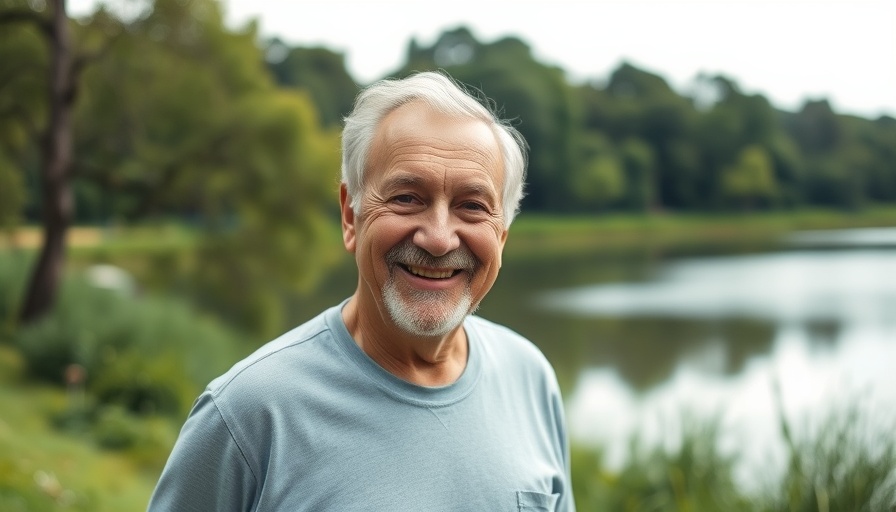
The Alarming Connection Between Diabetes and Heart Disease
Cardiovascular disease (CVD) and diabetes have reached epidemic proportions globally, with over 38 million adults in the United States affected. The troubling correlation between these two conditions can be attributed to unhealthy lifestyle choices like poor diets, lack of physical activity, and increasing rates of obesity. Yet, resounding evidence suggests that these debilitating conditions are not beyond remedy — an inspiring shift towards lifestyle medicine holds transformative potential for public health.
The Core Fundamentals of Lifestyle Medicine
The American College of Lifestyle Medicine (ACLM) identifies six key pillars fundamental to combating chronic diseases:
- Whole-food, plant-based diets
- Regular physical activity
- Stress management
- Avoidance of risky substances
- Restorative sleep
- Social connections
At the heart of Dr. Gunadhar Panigrahi's research lies the endorsement of a plant-based diet, rich in fiber and phytonutrients, which targets critical health issues like insulin resistance and inflammation. Unlike popular high-protein diets that often exacerbate cardiovascular risks, a plant-centric approach importantly addresses the roots of metabolic dysfunction.
Mechanisms of Reversal: How Lifestyle Changes Heal
Scientific advances demonstrate how precise lifestyle modifications support bodily functions:
- Insulin Sensitivity: Reducing intramyocellular fat through caloric restriction and exercise restores crucial insulin signaling pathways.
- Endothelial Repair: Regular physical activities foster nitric oxide production, which helps to heal vascular injury caused by hyperglycemia.
- Gut Health: Dietary fiber transforms into short-chain fatty acids (SCFAs), promoting reduced inflammation and healthier lipid metabolism.
In a groundbreaking study involving 35 high-risk patients, Dr. Panigrahi reported remarkable transformations: all participants achieved diabetes remission, displayed cardiovascular recovery, and experienced notable renal and neurological improvements. These outcomes underline the profound impact of sustainable lifestyle adaptations.
Nutritional Strategies: Beyond Fad Diets
Among the wealth of available dietary approaches, two evidence-supported strategies shine through:
- Low-Calorie Diets: A strict 850 kcal/day regimen for eight weeks led to a 34% reduction in liver fat, facilitating diabetes remission in a notable 86% of participants.
- Time-Restricted Eating (TRE): This method encourages eating within an 8–10 hour window, aligning food intake with natural circadian rhythms, improving glycemic control and lipid profiles.
Sample meal plans for different caloric intakes can help those ready to implement these strategies into their daily lives.
The Holistic Approach: Mind, Body, and Environment
Embracing lifestyle medicine extends well beyond dietary interventions:
- Exercise: Committing to 150–300 minutes of moderate activity weekly can reduce cardiovascular mortality by 26%, with even walking contributing positively to managing HbA1c levels.
- Sleep Hygiene: Ensuring seven hours of nightly sleep is crucial for balancing hormones linked to diabetes risk.
- Stress Management: Techniques such as yoga and meditation can effectively lower cortisol levels, leading to better health outcomes.
These approaches foster comprehensive well-being, merging physical fitness, mental clarity, and environmental health into a cohesive whole.
Life-Changing Decisions: Take Control of Your Health
Understanding the pivotal relationship between our lifestyle choices and chronic diseases inspires actionable change. By incorporating a balanced, plant-based diet, optimizing physical activity, and prioritizing mental health through stress management and sleep hygiene, individuals can pave their way toward a healthier life. As chronic diseases dominate public health discussions, embracing this holistic perspective can empower countless individuals in their pursuit of wellness.
Now more than ever, it's vital to encourage family and friends to join in adopting healthier habits and collectively shifting towards a lifestyle that promotes vitality and wellness.
 Add Row
Add Row  Add
Add 




Write A Comment